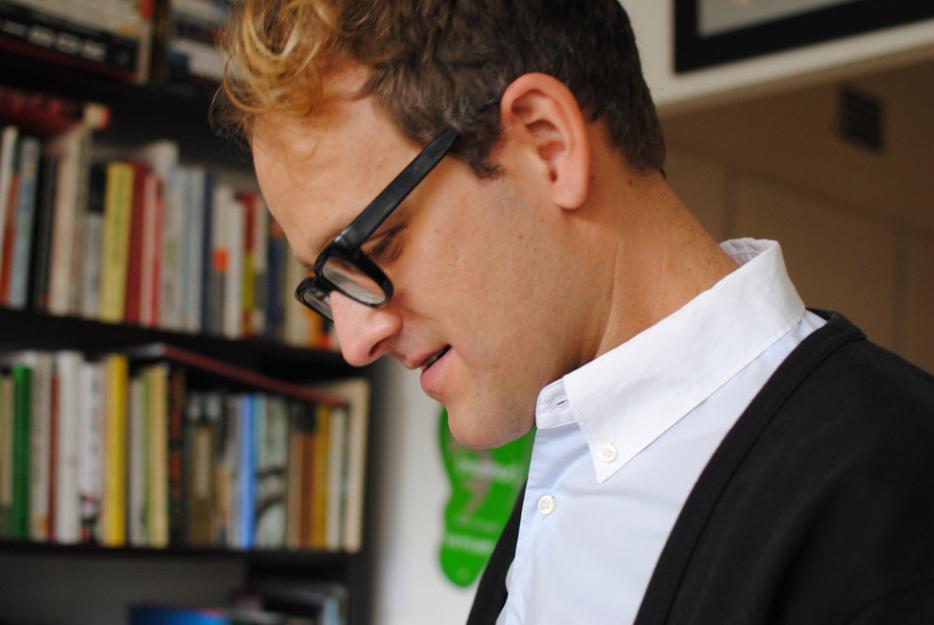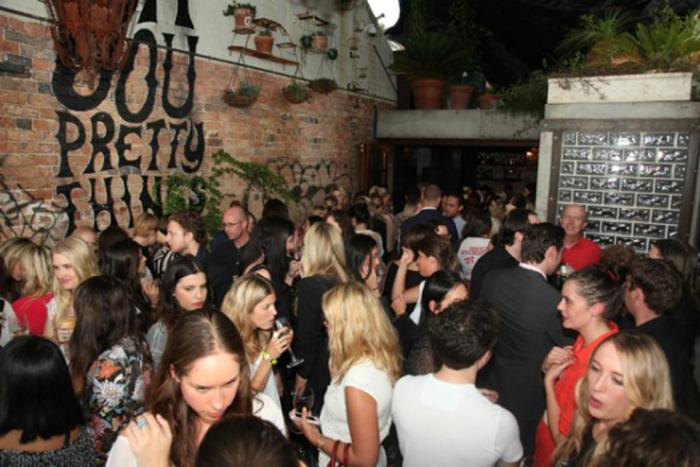Shelf Esteem is a weekly measure of the books on the shelves of writers, editors, and other word lovers, as told to Emily M. Keeler. This week’s shelf belongs to Shawn Micallef, who is a columnist with the Toronto Star, a senior editor and co-owner of Spacing Magazine, and the author of Stroll: Psychogeographic Walking Tours of Toronto. His books are in his very bright modernist apartment in downtown Toronto, which boasts a view of several different kinds of mid- and high-rises. In the middle distance, you can see a construction crane, hovering between two brand new condo buildings.
The books came out of the boxes like that, the last time I moved. Two years ago. And they were unorganized before. They came out of the boxes, they went up where they fit. Though there is a bit of a city section, here. Kind of. I’ve been teaching a course at the U of T on cities, so I’ve been trying to put all of the stuff that I would put into the syllabus in one spot. But even that’s been kind of mixed up. It’s near the bar, too, so that’s helpful. The bar was never supposed to be part of the bookshelf, but then I just had too many books, and so they kind of hold down the booze in one way or another.

For a future project, I want to do something about Windsor. If Toronto’s under-mythologized, Windsor is triply or quadrupally so. There are a few books. Lisa Gabriele wrote a novel that takes place in Essex County, around Windsor. There’s a number of historical books, and some art books. This is one from the ‘90s. A bunch of artists put this together, with Mark Laliberte, from Carousel Magazine. He’s from Windsor as well. Windsor had a really great scene, and a lot of these people live in Toronto now, of course.
No Great Mischief is great. I read it around when I moved here. [MacLeod]’s from Windsor, but writes about Toronto and Cape Breton. There’s great bits about walking up and down Spadina, going to see his brother. I thought about Spadina differently after I read this book, the way I thought about the Bloor Street Viaduct after I read In the Skin of a Lion. Both of these are fictional representations of factual places, and when I walk down those places I still think of them—the stories from the books are still very much a part of the physical place. When you’ve never read your place, hometown or not, you sort of eat this stuff up. Which is why I think Toronto books, mine and others’, are kind of sleeper successes. People do want to read about themselves, to see their lives reflected back at them.






